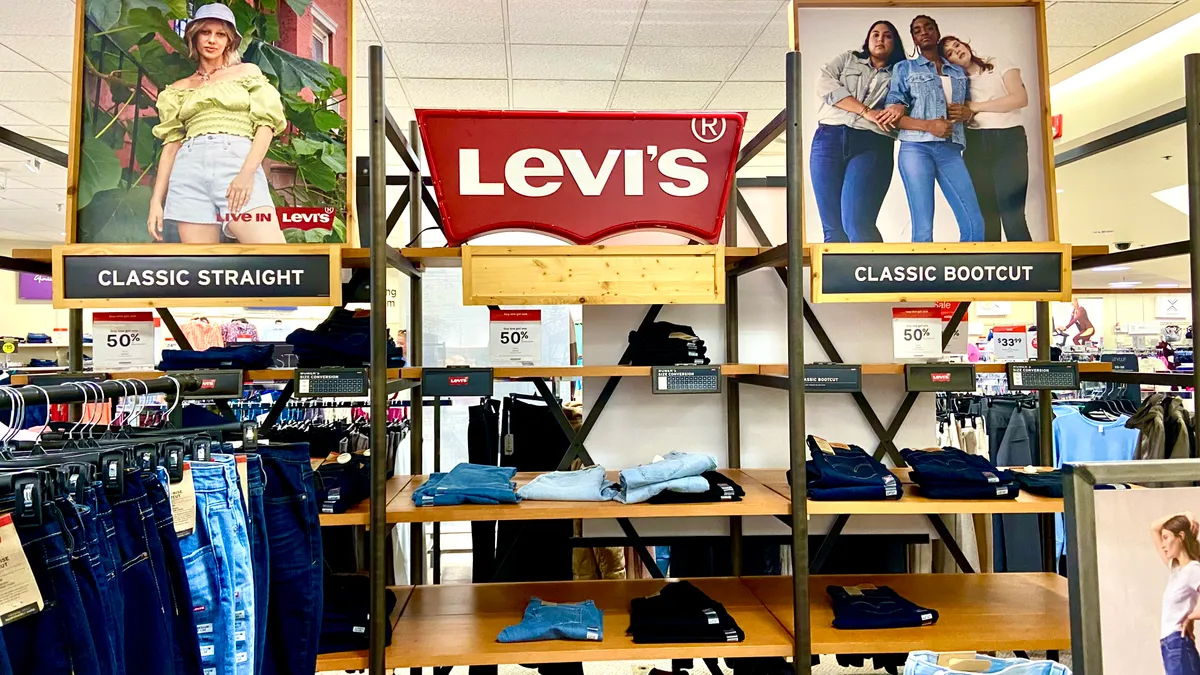Dive Brief:
-
Levi’s Q1 net revenue rose 6% to $1.7 billion, but profits and margins were down. Net income fell 41% to $115 million and gross margin contracted to 55.8% from 59.3%. E-commerce rose 11%.
-
DTC net revenues rose 12%, with company stores contributing 33% and its website contributing 9% to total Q1 net revenue. Wholesale rose 2%, driven by Asia and Canada with some growth in the U.S.
-
Inventories rose 33% year over year, a 25% improvement over last quarter’s 58% increase, Chief Financial and Growth Officer Harmit Singh told analysts. In Q2, inventory is on pace to be “substantially lower,” and should be in line with sales by the end of the year, he said.
Dive Insight:
Levi’s inventory struggle has largely been centered in the U.S., where at the end of the fourth quarter it was up 90% year over year, but has eased both in terms of dollars and units, Singh said Thursday. U.S. inventory in Q1 was down to 35% growth year over year, he said.
Dealing with this hasn’t been great for the bottom line, and the lingering effect on gross margin will be felt throughout the year. “We did get rid of inventory to the extent we could — that did hurt margins,” he said.
But Levi’s is taking share in a rebounding denim market, according to CEO Chip Bergh. The denim spike seen during the height of the pandemic had eased as consumers bought dressier apparel. But the category in the U.S. grew 1%, on top of 16% growth a year ago, he told analysts. Levi’s research shows it’s “the outright leader” among U.S. jeans consumers between 18 to 30 years old, and is growing share in women’s denim bottoms.
“We are now knocking on the door of being the number one brand in the U.S. That has not happened in my entire 11 and a half years at this company, and we continue to have momentum while others are struggling,” Bergh said. “In terms of brand equity ... I guess the first thing I would point to is just the strength of our overall DTC business, where we are in control of the brand and how we engage with the consumer and how we show up. It shows up in the business results.”
Levi’s is poised to grab global market share in denim as well, thanks in part to its high brand profile and diverse offer, according to Jane Hali & Associates analysts. The emphasis on the DTC channel helps keep it top of mind, they also said in emailed comments.
“The Levi brand continues to be one of the most relevant denim brands and evolves its product lines to suit consumer interest,” they said.
Globally, Levi's jeans are widely perceived as worth paying more because of quality and longevity, positioning the brand to navigate through the ongoing inflationary period and consumer hesitation, according to Bergh. Still, Levi’s, like many retailers and brands, is watching its lower-income customers hold back. Macroeconomic uncertainty led the company to reiterate its more cautious outlook for the year.
“We are seeing pretty significant softness in our signature Denizen business, so that value consumer is really being squeezed,” Bergh said. “There's definitely a bifurcation happening, where the lower-end consumer is making hard choices and either trading down or just not buying denim. But that middle-income consumer, which is kind of the sweet spot for the Levi's brand, is doing well and is still buying denim. And that is driving the growth of the Levi's business ... and the strength that we are seeing in our direct-to-consumer business.”













